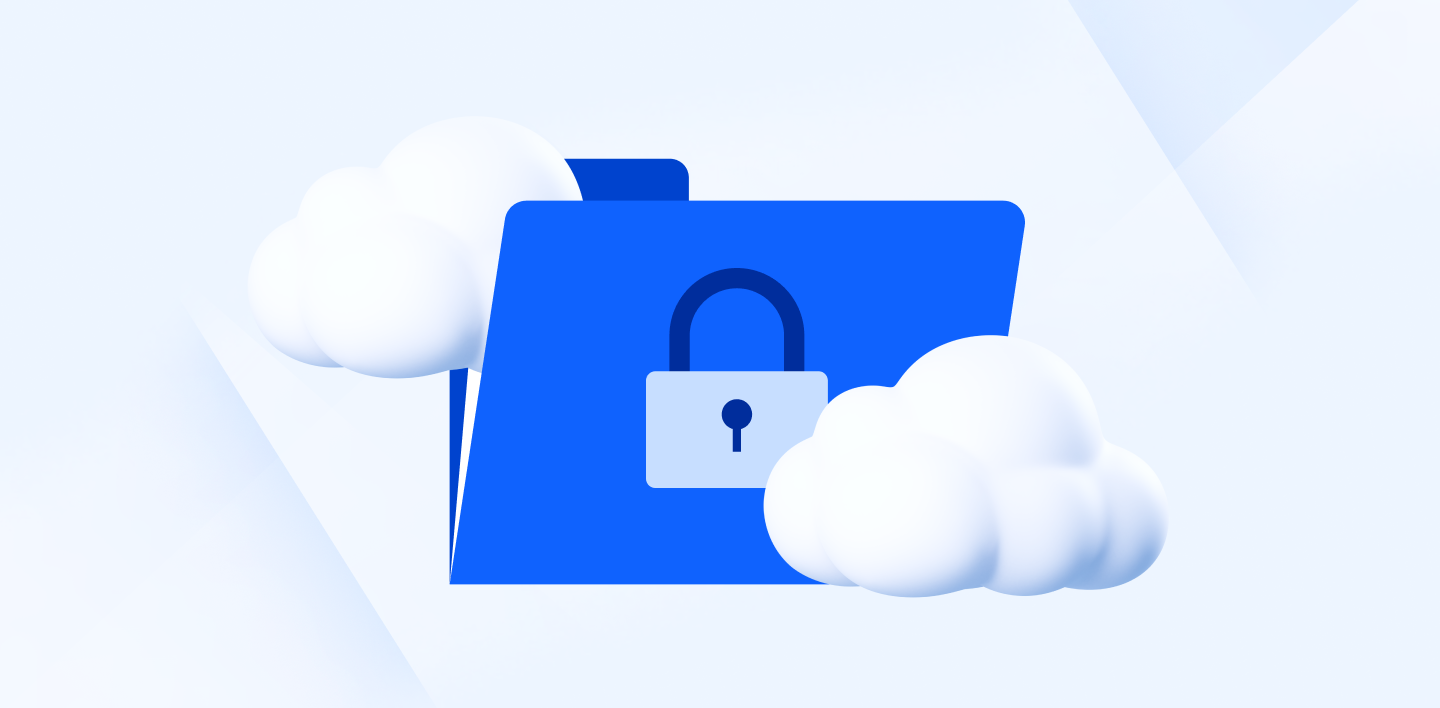5 Essential Considerations for Effective Cloud Data Protection

Nothing significant gets done in today’s business world without data. For example, every business depends on insights gathered from data to make informed decisions and stay competitive.
In fact, studies show that data-driven organizations are 23 times more likely to acquire customers than those that are not data-driven. Data is so crucial in modern businesses that there are laws in place to guide companies on storing and managing data.
But where is all this data stored? The cloud, mostly. Is it safe? It could be safe or unsafe, depending on how you manage it.
So, how can you effectively store and protect your data in the cloud without compromising its security? That’s what you’ll be learning in this article. At the end of this article, you will have learned the following:
- Why you need to protect your cloud data
- Challenges facing cloud data security
- Key considerations for effective cloud data protection
- Benefits of Cloud Data Security
Ready? Let’s roll!
Why is cloud data protection essential?
Protecting your cloud data effectively is a must-do if you’re going to run a successful business, yet it is not an easy task. However, knowing why your cloud data must be protected will motivate you to give it all it takes. Here are three reasons to protect data with your cloud storage provider.
Ensuring proper infrastructure monitoring can further enhance data protection by identifying potential risks before they become critical issues.
Data security and maintenance of confidentiality
Securing your company’s data and maintaining the confidentiality of your client’s data are two of the most important reasons to protect your cloud data. Customers must be confident that the data they’ve entrusted to your care is private and secure.
Trust building and brand reputation
How businesses protect data and the transparency in which they store it is vital in building a reputation based on trust. If you fail to protect your data and there’s a breach, your reputation will be hit, and you will lose people’s trust. This can subsequently lead to loss of customers and finances.
Business continuity
As noted earlier, data is essential for the growth of a modern business. When you lose vital business data, it affects the continuity of your business. Therefore, protecting your company data with secure and private cloud storage is your way of ensuring you continue to be in business.
See why you can't afford to handle your cloud data with kid’s gloves? If you do, not only will your reputation suffer damage, but you will also incur financial losses, and your business might grind to a halt. That’s not what you want, so you must be familiar with cloud data security's common challenges and reacting to cybersecurity incidents.
5 Challenges Facing Cloud Data Security
To effectively manage potential business problems, you must first know what they are. That’s why knowing the challenges stopping you from securing the data you’ve stored in the cloud is important. Below, find the top five challenges facing cloud data security.

1. Cybersecurity threats
The internet is filled with cybercriminals who aim to gain unauthorized access to cloud databases and data storage. These hackers stay strong as they look for new ways to breach cloud data security and access https://blog.internxt.com/sensitive-information/. This is why these cybernightmares are a major threat to the protection of cloud data storage.
2. Lack of control and visibility
Storing your data in the cloud is like being in the dark. It’s not visible to you, and you don't have much control over it. Many businesses see this as a challenge. They’re unable to know where their data is located, who can access it, and how it’s being used.
3. Shared cloud security infrastructure
Usually, cloud service providers use the same infrastructure for multiple customers. This arrangement leads to vulnerabilities that can cause cross-tenant data breaches.
When customers use a shared cloud storage infrastructure, storage, and networking, misconfigurations can occur, making users vulnerable to unauthorized data access.
4. Data encryption concerns
Data encryption is a basic part of data security. However, encrypting data in the cloud can be quite challenging. Encrypting data at the different stages of in-transit and at-rest is often difficult. This is a major concern to companies that secure their data in the cloud.
5. Compliance issues
Data compliance is a serious issue in today’s business landscape. There are a number of rules and requirements guiding data management, and companies often struggle to comply with them. It is even tougher to comply with these laws using cloud storage.
As you can see, the challenges facing cloud data security are numerous. However, with the right strategies, they can be tackled and overcome. As we're about to find out, there are best practices to follow to overcome these challenges and key considerations to abide by.
5 Key considerations for effective cloud data protection
Every stakeholder in this modern business era knows that effective cloud data protection requires well-planned and well-executed strategies. That’s why I've collated the five best key considerations for achieving effective cloud data. Take a look.
1. Embrace bot protection solutions
One of the most essential considerations for improving your cloud data protection is adopting bot protection solutions. These applications help safeguard your cloud data against malicious bots and automated online missiles. However, choosing the best bot protection software can be tasking and confusing. To help you make the best choice, this article compares bot protection solutions.
Bot protection applications prevent Account Takeover (ATO) attacks, credential stuffing, scraping and data harvesting, API abuse, and distributed denial of service (DDoS). They also identify and analyze patterns to detect threats, do real-time monitoring, and give regular reports.
2. Execute data encryption
Encrypting your data is one of the most effective ways of protecting it. There are two aspects of data encryption. They are in-transit encryption and at-rest transcription.
- In-transit encryption: This is the transport layer security and its job is to ensure your data is safe and secure over network transmissions. Whether you’re moving data between on-premises systems and the cloud or between elements within the cloud environment, this type of encryption helps you to prevent eavesdropping and secures your data.
- At-rest encryption: This type of encryption safeguards your data when it is in one place like when stored in databases, file systems, or any other form of storage. At-rest encryption secures your data against unauthorized access, breach, and physical security risks.
These two types of encryption are like two sides of a coin. While in-transit protects your data on the go, at-rest ensures it is secure on the spot. Having the two forms of encryption gives double protection to your data and limits cases of undue access.

3. Put access control measures in place
To effectively protect cloud data, be sure to put access control measures in place. You can do this in the following ways:
- Identity and Access Management (IAM): This measure lets you control user identities and access rights centrally. When IAM is properly implemented in an organization, access policies, authentication, and user provisioning are properly controlled and managed. This reduces cases of unauthorized access.
- Role-Based Access Control (RBAC): With RBAC, you can limit unauthorized access in your company by ensuring that staff can access only the resources they need to do their jobs. Once this is in place, undue access to cloud data will be limited.
- Multi-Factor Authentication: To add a layer of security and reduce unauthorized access, enforce multi-factor authentication. This measure involves requesting multiple forms of authentication from users, like passwords, SMS codes, and biometric verification, before allowing them to access cloud data.
Cloud Infrastructure Entitlement Management (CIEM) can further enhance security. CIEM security leverages IAM, RBAC, and MFA by continuously monitoring and managing permissions across cloud environments.
They help identify and mitigate over-privileged access, ensuring that entitlements are aligned with actual usage and business needs, which reduces the risk of exposing sensitive data.
4. Monitor and audit cloud data access
Consistent monitoring and auditing of cloud data access is another way to ensure effective protection. To do this, practice log management and analysis.
This lets you track and analyze user system events, activities, and potential security risks.
Also, when you audit cloud data access and generate audit and compliance reports, you get insights into the security situation of your cloud infrastructure. With these reports, you easily notice irregularities and vulnerabilities and can enforce compliance promptly.
That’s not all; audit and compliance reports also enable you to prove security practices to stakeholders and external auditors. This demonstrates your commitment to developing and maintaining a secure and compliant organization. It also boosts your credibility and instills confidence in stakeholders and investors.
5. Secure cloud data with backups and recovery strategies
To protect your cloud data, regular backup is non-negotiable. Doing this ensures you always have a copy of data in case of data corruption, accidental deletion, and system failures. When you automate our backup process, you reduce the risk of human errors and promote the availability of current backups.
Another essential consideration in protecting your cloud data is the implementation of recovery strategies. Have a robust disaster recovery plan that enables you to recover your cloud data and infrastructure in case of a disaster. This and other strategies will reduce the impact of any catastrophic event on your cloud data.
The considerations above are time-tested and well-trusted. If you ignore them, you’ll be inviting data breaches and other cybersecurity threats, which can harm your business. However, they can transform your business tremendously if they're well implemented.
5 Benefits of Cloud Data Security
The law of cause and effect also applies to business practices, and data protection is not an exception. If you implement the best practices listed above, you will reap benefits that will grow your business and make you stand tall among competitors. Here are five top benefits of cloud data security.
1. Prompt breach detection and response
A strong cloud data security positions you to promptly detect potential data breaches and respond quickly New breakthroughs in technology, such as AI and built-in analytics in data protection solutions (DLP), automatically scan suspicious activities to identify and respond to them quickly.
2. Seamless backups and recovery
With cloud data security solutions, you automate and standardize backups. This saves time and lets your team concentrate on other important aspects of their job. Also, with a solid disaster recovery plan, you can easily restore and recover data in catastrophic incidents.
3. Improved data encryption
When your data is protected in-transit, and at rest, you’re assured of a tight ship that reduces unauthorized access. Your cloud data transfer, storage, and sharing becomes more secure when several layers of encryption are in place.
4. Cost-efficiency
Executing cloud data security measures helps reduce your total cost of ownership (TCO). When these security measures are implemented, you also save administrative and management costs as you won’t need to invest heavily in hosting your own cloud storage via servers and data centers.
5. Enhanced data compliance
If you’re running a company in today’s business landscape, you have data compliance obligations, and effective cloud data protection practices help you meet these obligations.
Data compliance demands that you know where your data is stored, who has access to it, and how it is processed and protected. A strong cloud data security structure enables you to comply with these rules.
As mentioned earlier, the benefits are only possible if you constantly abide by cloud data security best practices. You get even better results if you’re regularly improving your security strategies.

Boost your cloud data security with industry best practices
No man is an island. To improve your cloud data protection, you can’t act in isolation. You must observe industry best practices and implement them. This article has highlighted top-notch operations and processes that enhance cloud data security.
These practices include embracing bot protection solutions, executing data encryption, implementing access control measures, monitoring, and auditing cloud data, and securing cloud data with backup and recovery strategies.
When effectively implemented, these actions yield benefits like prompt breach detection and response, smooth backups and recovery, improved data encryption, cost-efficiency, and enhanced data compliance.

